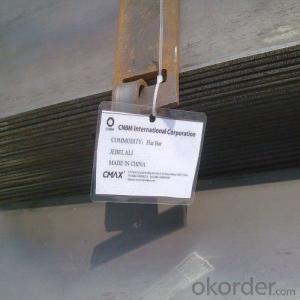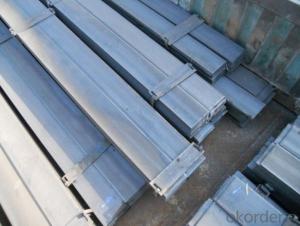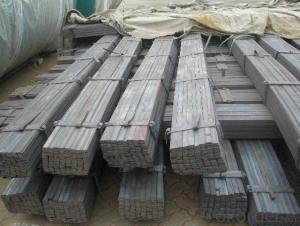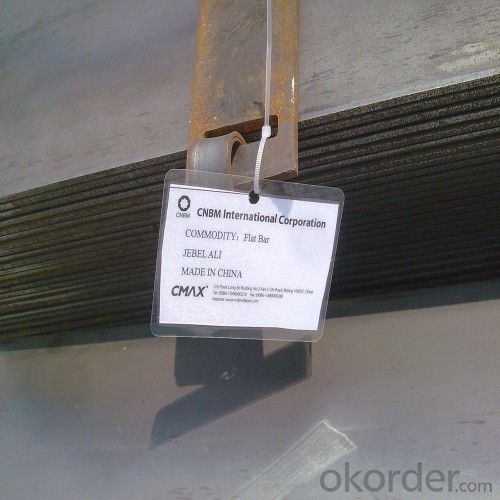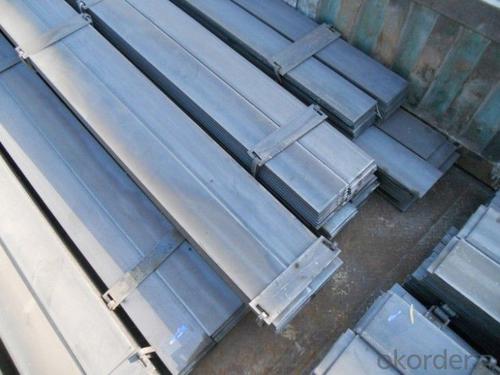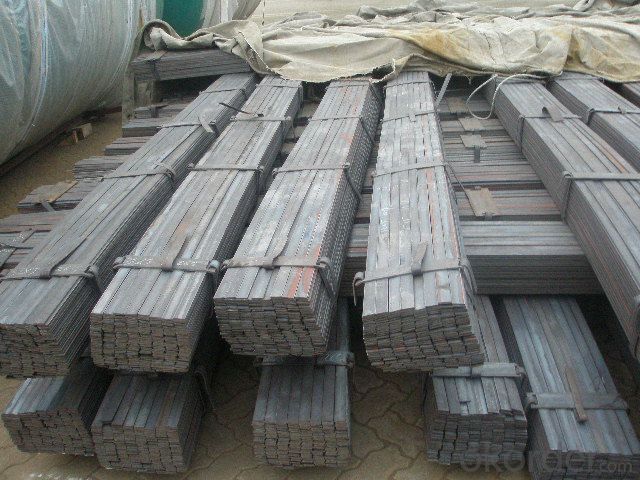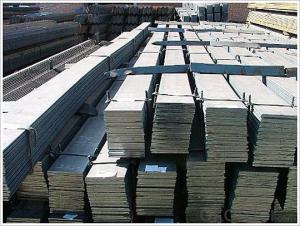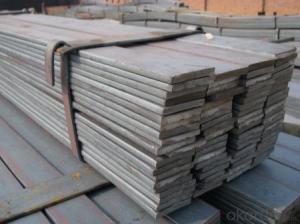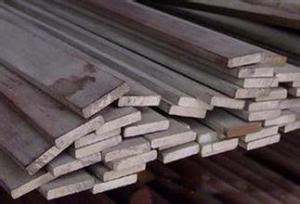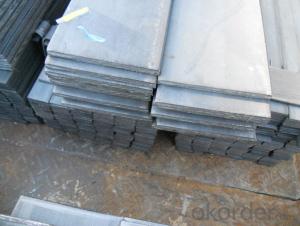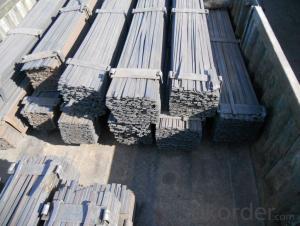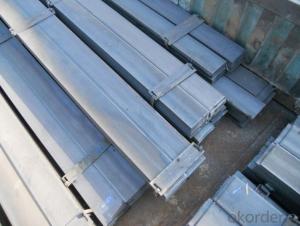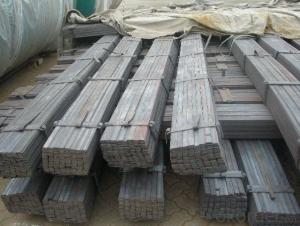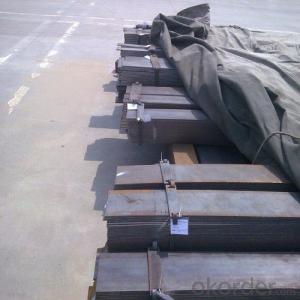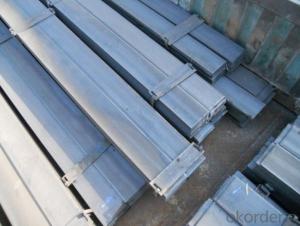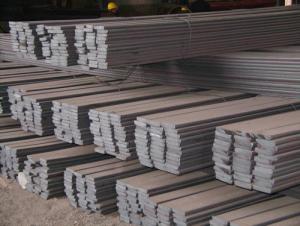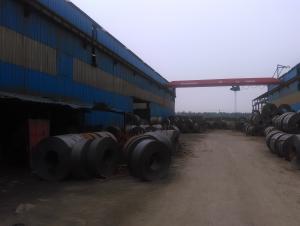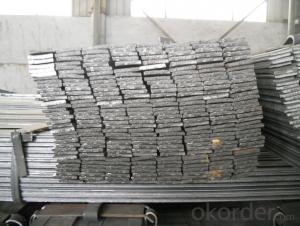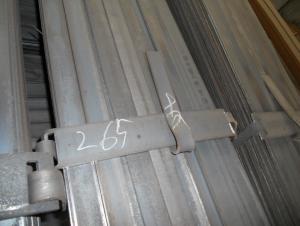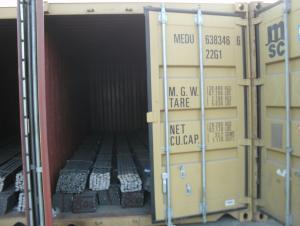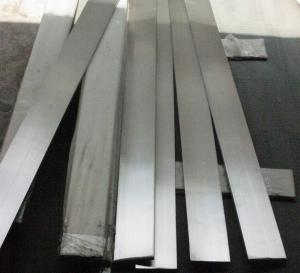Hot Rolled Flat Bars in Material Grade Q235 with High Quality
- Loading Port:
- Tianjin
- Payment Terms:
- TT OR LC
- Min Order Qty:
- 25 m.t.
- Supply Capability:
- 10000 m.t./month
OKorder Service Pledge
OKorder Financial Service
You Might Also Like
Product Description:
OKorder is offering high quality Flat Bar at great prices with worldwide shipping. Our supplier is a world-class manufacturer of steel, with our products utilized the world over. OKorder annually supplies products to European, North American and Asian markets. We provide quotations within 24 hours of receiving an inquiry and guarantee competitive prices.
Product Applications:
Flat Bars are ideal for structural applications and are widely used in the construction of buildings and bridges, and the manufacturing, petrochemical, and transportation industries.
Product Advantages:
OKorder's Flats Barare durable, strong, and resist corrosion.
Main Product Features:
· Premium quality
· Prompt delivery & seaworthy packing (30 days after receiving deposit)
· Corrosion resistance
· Can be recycled and reused
· Mill test certification
· Professional Service
· Competitive pricing
Product Specifications:
Manufacture: Hot Rolled
Grade: Q195 – 235
Certificates: ISO, SGS, BV, CIQ
Length: 6m – 12m, as per customer request
Packaging: Export packing, nude packing, bundled
Chemical composition of Q235
Alloy No | Grade | Element(%) | ||||
C
| Mn
| S
| P
| Si
| ||
Q235
|
B
|
0.12—0.20 |
0.3—0.7 |
≤0.045 |
≤0.045
|
≤0.3
|
Physical properties of Q235
Alloy No | Grade | Yielding strength point(Mpa) | Tensile strength (Mpa) | Elongation after fracture(%) | ||||||
Thickness (mm) | Thickness (mm) | |||||||||
≤16 | >16--40 | >40--60 | >60--100 | ≤16 | >16--40 | >40--60 | >60--100 | |||
≥ | ≥ | |||||||||
Q235 |
B |
235 |
225 |
215 |
205 |
375--500 |
26 |
25 |
24 |
23 |
FAQ:
Q1: How soon can we receive the product after purchase?
A1: Within three days of placing an order, we will begin production. The specific shipping date is dependent upon international and government factors, but is typically 7 to 10 workdays.
Q2: How do we guarantee the quality of our products?
A2: We have established an advanced quality management system which conducts strict quality tests at every step, from raw materials to the final product. At the same time, we provide extensive follow-up service assurances as required.
Q3: The products are invoicing on theoritical weight or on actual weight?
A3: We can do it in both manners, according to buyers' requiremnet.
Q4: How soon can we receive the product after purchase?
A4: Within three days of placing an order, we will begin production. The specific shipping date is dependent upon international and government factors, but is typically 7 to 10 workdays.
Images:
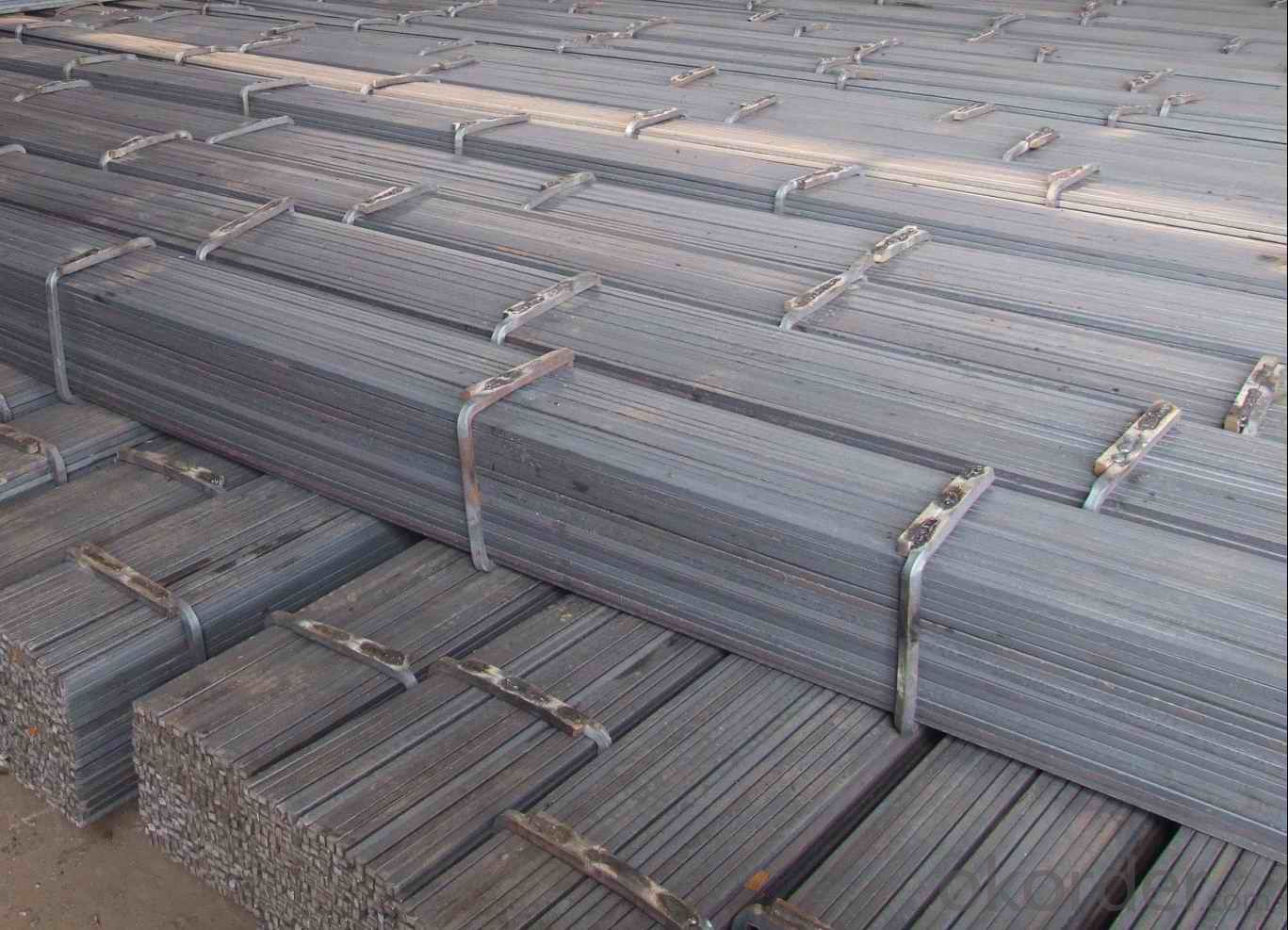
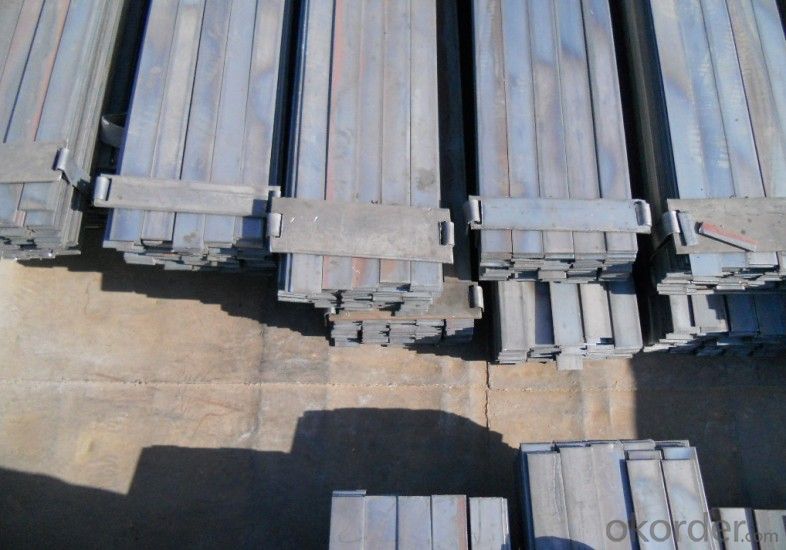
- Q: Can steel flat bars be used for making furniture frames or supports?
- Yes, steel flat bars can definitely be used for making furniture frames or supports. Steel is a versatile and durable material that offers excellent strength and stability, making it ideal for furniture construction. Steel flat bars provide a strong foundation and structural integrity to furniture frames or supports, ensuring longevity and stability. Additionally, steel can be easily shaped and welded, allowing for flexibility in design and customization. It is commonly used in the construction of various furniture pieces such as tables, chairs, shelving units, and bed frames. Overall, steel flat bars are a reliable choice for furniture frames or supports, providing a sturdy and long-lasting solution.
- Q: Do steel flat bars have a specific surface finish?
- Yes, steel flat bars can have various surface finishes such as mill finish, hot rolled, cold rolled, brushed, polished, or coated depending on the desired application or aesthetic appearance.
- Q: How do you cut steel flat bars?
- There are multiple ways to cut steel flat bars, depending on the desired precision and available tools. Here, we present three commonly used techniques: 1. Hacksaw: For small projects, using a hacksaw is a basic yet effective method. Start by marking the desired cutting line on the steel bar using a measuring tape and marker. Then, secure the bar in a vice to keep it steady. Take a hacksaw with a bi-metal blade and begin cutting by applying consistent pressure and using long, even strokes. It may require time and effort, but with patience, you can achieve a clean cut. 2. Angle grinder: An angle grinder equipped with a metal cutting disc is a more efficient option for cutting steel flat bars. Prior to starting, ensure your safety by wearing goggles and work gloves. Secure the bar in a vice and mark the cutting line. Next, position the angle grinder perpendicular to the bar and switch it on. Slowly guide the grinder along the marked line, applying moderate pressure. Sparks may occur, so it's important to work in a well-ventilated area and avoid flammable materials. 3. Metal-cutting band saw: If you have access to a metal-cutting band saw, this is the most precise and efficient method. Begin by adjusting the blade tension and aligning the saw's fence with the cutting line on the steel bar. Switch on the saw and gradually feed the bar into the blade, maintaining a steady pace. The band saw's teeth will smoothly cut through the steel, resulting in a clean and accurate cut. Remember to wear safety goggles and gloves when using power tools. Regardless of the chosen cutting method, after the steel flat bar has been cut, it may have sharp edges. To remove any burrs or roughness, employ a file or a metal deburring tool to smooth the edges for a polished appearance.
- Q: Can steel flat bars be used as structural support in buildings?
- Yes, steel flat bars can be used as structural support in buildings. Steel flat bars are commonly used in construction due to their strength and durability. They can provide structural support in various applications such as beams, columns, and braces. Steel flat bars offer high load-bearing capacity and can withstand heavy loads, making them suitable for use in building structures. Additionally, their uniform shape and size make them easy to work with and integrate into construction projects. Overall, steel flat bars are a reliable choice for providing structural support in buildings.
- Q: Are steel flat bars suitable for outdoor applications?
- Yes, steel flat bars are suitable for outdoor applications. They are known for their durability, strength, and resistance to corrosion, making them ideal for various outdoor uses such as construction, fencing, and landscaping.
- Q: Can steel flat bars be used for making brackets or supports for lighting fixtures?
- Yes, steel flat bars can be used for making brackets or supports for lighting fixtures. Steel flat bars are strong and durable, making them suitable for providing structural support and stability to lighting fixtures. Additionally, steel's high load-bearing capacity ensures that the brackets can effectively hold the weight of the lighting fixtures.
- Q: What is the difference between a steel flat bar and a steel channel?
- A steel flat bar and a steel channel are both structural steel shapes, but they have distinct differences in their shape and design. A steel flat bar is a long, rectangular-shaped piece of steel with straight edges. It is commonly used in construction and manufacturing industries for various applications such as braces, supports, and frames. The flat surface of the bar provides stability and strength, making it suitable for load-bearing purposes. The width and thickness of a flat bar can vary depending on the specific requirements of a project. On the other hand, a steel channel is a C-shaped structural component with two flanges and a web in the middle. The flanges are perpendicular to the web, giving the channel its distinctive shape. Channels are widely used in construction, particularly in the framing of buildings and the creation of structural support systems. The flanges provide strength and rigidity to the channel, making it suitable for applications where lateral support and stability are required. In summary, the main difference between a steel flat bar and a steel channel lies in their shape and structural design. While a flat bar is a long, rectangular piece with straight edges, a channel has a C-shaped profile with flanges and a web. The choice between the two depends on the specific requirements of a project and the type of load-bearing or support function it needs to fulfill.
- Q: What are the different techniques for joining steel flat bars together?
- There are several techniques for joining steel flat bars together, including welding, bolting, riveting, adhesive bonding, and mechanical fastening. Each method has its own advantages and considerations depending on the specific application and desired strength of the joint. Welding is a commonly used technique that involves melting the edges of the bars and fusing them together. Bolting involves using bolts or screws to secure the bars, while riveting involves using rivets to create a permanent joint. Adhesive bonding utilizes high-strength adhesives to bond the bars together, and mechanical fastening employs various connectors such as clips or brackets to hold the bars in place. The choice of technique depends on factors such as the load-bearing requirements, the type of steel being used, and the aesthetic considerations of the project.
- Q: Can steel flat bars be used for making tools or toolboxes?
- Yes, steel flat bars can be used for making tools or toolboxes. Steel is a strong and durable material, making it suitable for constructing various tools and toolboxes that require strength and stability. Additionally, steel can be easily shaped and welded, allowing for the creation of customized tool designs.
- Q: Can steel flat bars be used for making furniture or fixtures?
- Absolutely, steel flat bars are absolutely suitable for furniture or fixture production. With their versatility and strength, steel flat bars are perfect for crafting long-lasting and practical pieces. They can be employed in the construction of a wide range of furniture, including tables, chairs, shelves, and cabinets, as well as fixtures such as brackets, frames, and supports. The stability and structural integrity offered by steel flat bars make them highly favored in both industrial and modern designs. Moreover, steel can be effortlessly welded, bent, or shaped to fulfill specific design demands, allowing for the creation of distinctive and personalized furniture or fixtures.
Send your message to us
Hot Rolled Flat Bars in Material Grade Q235 with High Quality
- Loading Port:
- Tianjin
- Payment Terms:
- TT OR LC
- Min Order Qty:
- 25 m.t.
- Supply Capability:
- 10000 m.t./month
OKorder Service Pledge
OKorder Financial Service
Similar products
Hot products
Hot Searches
Related keywords
